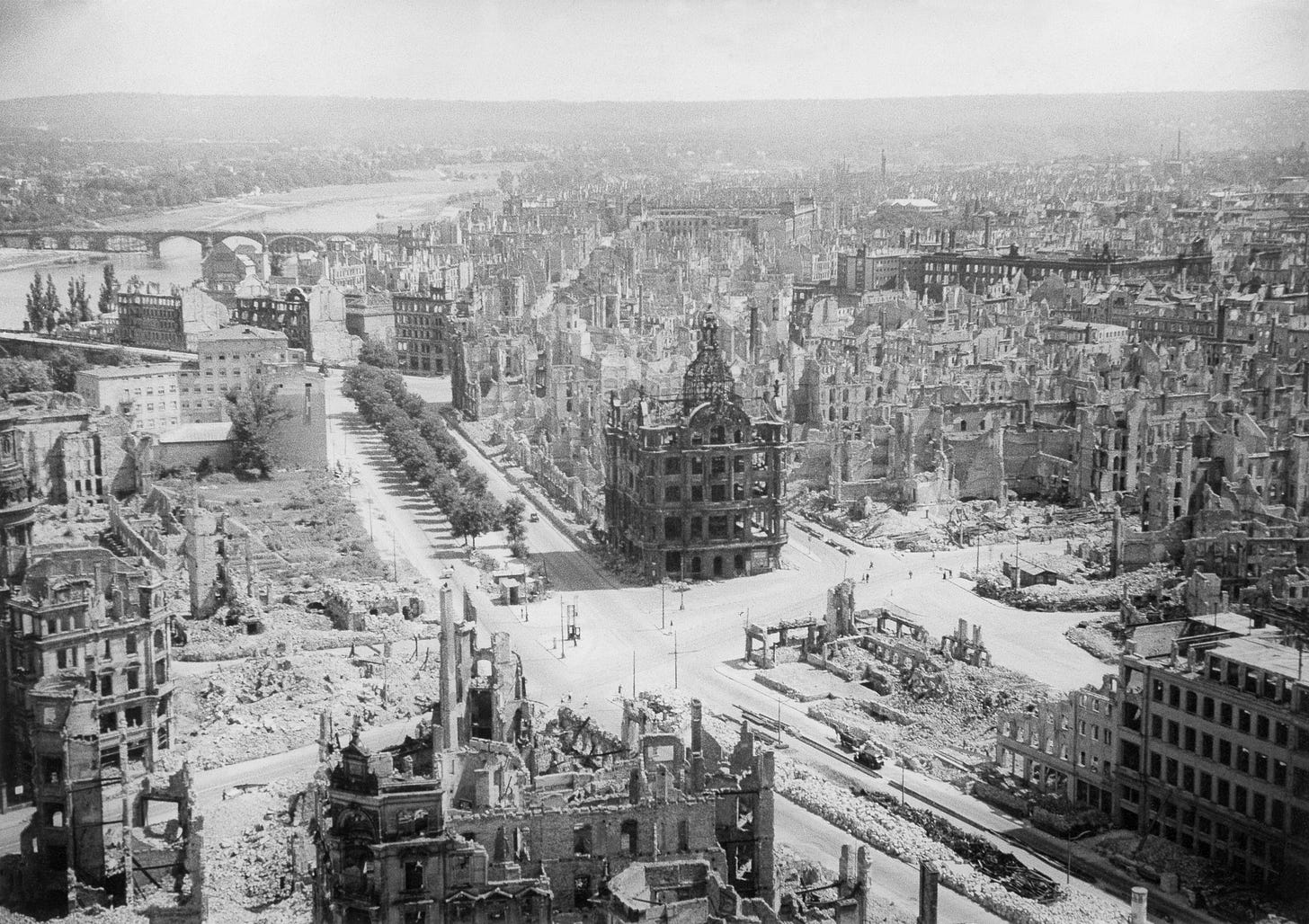When Liberalism Was at Its Best—1
Back in the tragic form that emerged in the immediate aftermath of the Second World War

Teaching what I’ve chosen to label “postwar liberalism” in my course on “Contemporary Political Theory” at Penn this semester has been a wonderful experience. I’ve loved turning back to some of my favorite authors, reading them anew, and thinking about how to make their ideas speak to my students, nearly all of whom were born after the September 11 terrorist attacks and came to political consciousness in a political and cultural world very different than the one that produced the thinkers we’ve been reading over the past couple of weeks.
It's also been clarifying to dive into the essays of Isaiah Berlin, Lionel Trilling, Reinhold Niebuhr, and their contemporaries because, thanks to my friend Sam Moyn’s widely discussed and sharply critical book about these and related figures, they’ve been much on my mind in recent months. I wasn’t sure: Would I still find them as appealing as I used to—back during my last sustained engagement with them in graduate school in the 1990s?
The answer is an emphatic yes. These are my enduring intellectual allies and compatriots—certainly more so than just about anyone writing and thinking about politics today. That includes lots of people I respect and feel generally close to in ideological terms. In the end, I feel more kinship with the postwar liberals. And I think it’s worth explaining why in a three-part post.
The Shocking Brutality of World War II
There are always many contexts, but the one I’ve chosen to emphasize in my class as background for the liberal thinkers we’re reading and discussing is World War II and the emergence of the Cold War with the Soviet Union just a few years later. The liberalism of this era is therefore “postwar” not merely in the temporal sense that it comes after the conclusion of the Second World War, but also, and more significantly, in the thematic sense that it’s in large part a response to the cataclysmic human toll of the war and the fear of such monumental bloodshed recurring.
It's hard to wrap one’s mind around just how much death and suffering took place in Europe between 1939 and 1945. (In my class and here, for lack of time and space, I don’t even begin to address the enormous scope of the death and suffering endured in Asia and other theaters of the war.)
For comparison’s sake, consider these approximate numbers:
American deaths in the Korean War: 33,000 military
American deaths in Vietnam: 58,000 military
American deaths on September 11, 2001: nearly 3,000, mostly civilian
American deaths in Iraq post 2003: 4,500 military and civilian contractors
American deaths in Afghanistan: 2,400 military and civilian contractors
Then there’s the number of American deaths in World War II: 416,000, mostly military
That’s more than seven times the number of deaths in Vietnam, and in less than half the number of years.
But just look at what Europeans experienced. (These statistics, as well as some of the language in the remainder of this section of the post, come from the opening chapter of Tony Judt’s magisterial history Postwar.)
Number of Europeans killed in World War II: roughly 36.5 million, well over half of them civilians
Number of Russians killed: 16 million
Number of Jews killed: 6 million
Number of Poles killed: 5 million
Number of Yugoslavs killed: 1.4 million
Number of Greeks killed: 430,000
Number of Frenchmen killed: 350,000
The causes of these deaths, in addition to soldiers dying in battle, included mass extermination in death camps and killing fields; disease, malnutrition, and starvation; the shooting and burning of hostages; the effects of bombing and shelling cities; the deliberate shooting of refugee columns; and the working to death of slave laborers in war industries and prison camps.
When the Germans invaded the Soviet Union, they captured 5.5 million Soviet soldiers. Of these, 3.3 million died of starvation, exposure, and mistreatment in German camps before the end of the war.
When the Soviet army swept through central Europe toward Germany several years later, they took their revenge. There were areas where not a single man, woman, or child was left alive.
In the city of Vienna, Austria alone, 87,000 women were reportedly raped by Soviet soldiers in the three weeks between their arrival and the German surrender. A larger number of rapes were reported in Berlin during the five days of May 2-7, 1945.
Between them, Hitler and Stalin uprooted, transplanted, expelled, deported, and dispersed some 30 million people in the years 1939-45.
Whole cities were destroyed: Hamburg, Cologne, Dusseldorf, Dresden, large parts of Berlin, and dozens of other German cities; 80 percent of Minsk in Belarus was destroyed; Kiev in Ukraine was left a smoldering ruin; the Polish capital of Warsaw was torched and dynamited by withdrawing German troops, house by house, block by block.
Twenty-five million people in Russia were left homeless, and another 20 million in Germany.
Roads, rail tracks, and bridges were blown up across much of the continent, along with factories that formed the basis of entire industries.
Postwar liberalism took its distinctive shape in response to these unspeakably gruesome events. Why did Europeans end up slaughtering each other with such savagery and destructiveness? How could it be prevented from happening again? What kind of politics would be most likely to secure and maintain peace? And how could such a politics be consolidated—through the inculcation of which truths about the human condition? These were the questions the postwar liberals were ultimately responding to and attempting to answer.
Keep reading with a 7-day free trial
Subscribe to Notes from the Middleground to keep reading this post and get 7 days of free access to the full post archives.




